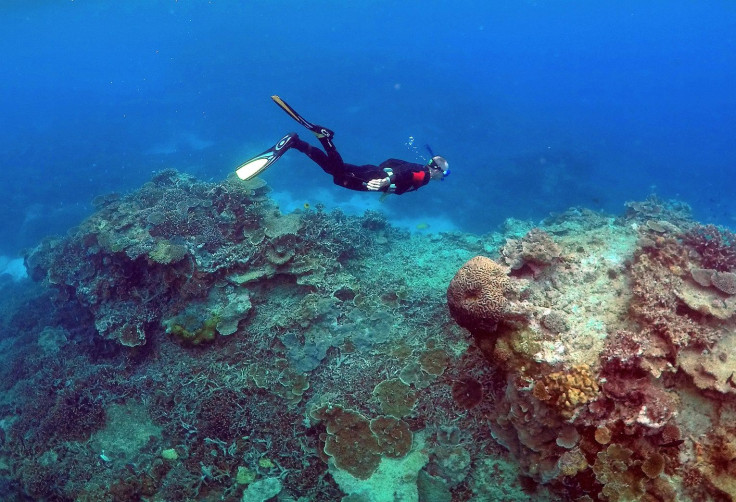Great Barrier Reef blue hole: Australian biologist explores ‘time capsules for ocean’

A blue hole in an isolated location in the Great Barrier Reef, which is almost impossible to see from above, has been explored. Blues holes are of great importance to marine researchers because they are said to hold treasure troves of information.
They are called blue holes simply because of the navy waters that exemplify the formations. The waters usually create a contrast with the turquoise around them. In most cases, blue holes are formed from caves or sinkholes that develop slowly as time goes by. Many of them were formed during the last Ice Age.
Australian marine biologist Johnny Gaskell said that blue holes are similar to time capsules for the ocean. He shot a video of a Great Barrier Reef blue hole, shy of 100 feet deep at its centre. The waters have been a home to turtles and tropical fishes.
Gaskell shared what he had witnessed, saying a large coral colony stands out. These have turned out to become interesting formations, which he thought was possibly due to the lack of current and disturbance from wave action.
“These colonies form abstract structures that seem to have no pattern, growing outwards and changing course at random,” National Geographic quotes him as saying. It is perfectly still within the walls of the blue hole, it has been said. There was no current at all.
Gaskill said the coral growths extend just a portion of the way down. If anyone goes down to the dark bottom of the blue hole, it was, for the most part, sandy sediment.
Large hurricanes are a threat to corals. Gaskell was searching for corals spared from Cyclone Debbie, which hit the country in March. It was the same time he started looking for blue holes.
Google Maps has been particularly useful for his search. He spotted what appeared to be a blue hole in a remote area almost 120 miles away from the nearest island. It was not the first time the particular blue hole has been identified. But it had been difficult to access it because of its remoteness. Little had been known about this blue hole.
During a diving expedition in September, Gaskell has confirmed that it was indeed a blue hole. He released a video of the dive with National Geographic, and he is looking to continue searching and surveying blue holes in the Great Barrier Reef.
Queensland, Australia/YouTube




















